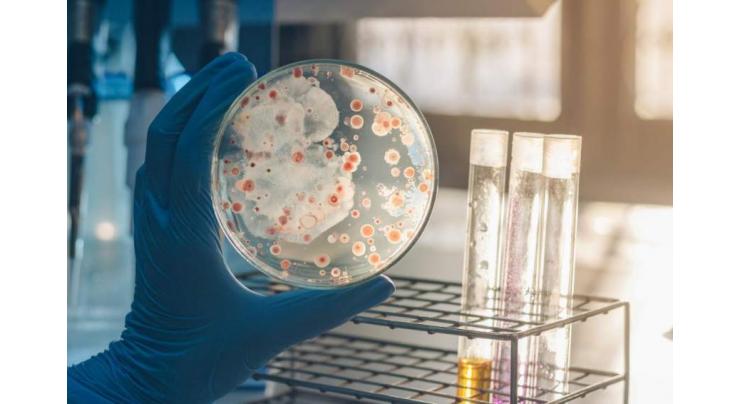
How Bacteria 'act As One' To Escape Antibiotics
Umer Jamshaid Published November 26, 2019 | 11:58 AM

New research zooms in on Pseudomonas aeruginosa to uncover a strategy that drug-resistant bacteria use to avoid antibiotics
Islamabad (UrduPoint / Pakistan Point News - 26th November, 2019) New research zooms in on Pseudomonas aeruginosa to uncover a strategy that drug-resistant bacteria use to avoid antibiotics. The findings could help make antibiotics more effective.Share on PinterestPetri dish experiments show how bacteria communicate to escape antibiotics.Jean-Louis Bru, from the department of molecular biology and biochemistry at the University of California, Irvine, is the first author of the new study, which appears in the Journal of Bacteriology.Bru and colleagues focused their research efforts on Pseudomonas aeruginosa(P.
aeruginosa), a type of bacteria that attacks people with cystic fibrosis.Cystic fibrosis is a hereditary respiratory condition wherein the lungs produce more mucus than they should. It affects about 30,000 people in the United States.P.
aeruginosa is one of the most dangerous types of bacteria.In the context of the public health crisis that is antibiotic resistance, the World Health Organization (WHO) placed P. aeruginosa on the list of "priority pathogensTrusted Source" that is, the 12 bacteria that are most hazardous to human health because they have become resistant to the drugs that doctors commonly used to fight them.WHO divided these 12 bacteria into "critical," "high," and "medium" priority, listing P.
aeruginosa as critical due to its resistance to the group of antibiotics called carbapenems.In this broader picture, research such as the study that Bru and colleagues have conducted is crucial for both understanding bacteria's defense mechanisms and tackling infections more effectively.Bacteria act as 'one united organism'In the new study, the researchers examined the growth and spread of bacteria in petri dishes, recreating an environment similar to that of the mucous membranes that enable P.
aeruginosa to thrive in cystic fibrosis.Here, the team tested the effect of antibiotics and bacteriophages on "swarming," which is the ability that bacteria have to move collectively.BacteriophagesTrusted Source are viruses that infect and attack bacteria from within.Mixing the antibiotic gentamicin with P.
aeruginosa cells revealed that the bacteria send signals to their conspecific bacteria, warning them of the danger and enabling them to avoid it.The Pseudomonas bacteria do this by secreting the quinolone signaling molecule PQS, write the authors.
They explain, "These mechanisms have the overall effect of limiting the infection to a subpopulation, which promotes the survival of the overall population."
Recent Stories

PTI to stage nationwide protests against alleged electoral frauds

Senate continues discussion on Presidential address to Joint Sitting of Parliame ..

Masood Khan calls for Pak-US cooperation for regional peace

Interior Minister starts Margalla Trail Patrol for security

Currency Rate In Pakistan - Dollar, Euro, Pound, Riyal Rates On 26 April 2024

Today Gold Rate in Pakistan 26 April 2024

ICC Womens T20 World Cup Qualifier, Match 2: Ireland Women open with Comfortable ..

Robinson, bowlers help New Zealand go 2-1 up against Pakistan

Shahzeb Chachar to hold khuli kachehri on April 26

Heatwave amid Israel's aggression in Gaza brings new misery, disease risk

Tourism must change, mayor says as Venice launches entry fee

Court adjourns Judicial Complex attack case till May 17
More Stories From Health
-

Vaccines save at least 154 million lives in 50 years: WHO
2 days ago -

UHS to issue MBBS degrees within three months after final result
2 days ago -

Rawalpindi woman gives birth to six babies
7 days ago -

DC calls for intensive anti-polio drive in ICT
8 days ago -

World Hemophilia Day observed to underscore importance of providing comprehensive care
9 days ago -

Six in a family with heart on the 'right side'
9 days ago
-

Diabetic disease increasing rapidly : Dr. Noor Elahi Memon
9 days ago -

World Hemophilia Day observed
9 days ago -

ATC dismisses bail petition of doctor involved in illegal kidneys transplant
17 days ago -

Dr. Shehzad warns against deviation from WHO guidelines on anti-smoking
17 days ago -

Health activists express concerns over attempts to derail tobacco control
19 days ago -

UHS declares MBBS first prof, MS urology exam results
28 days ago











